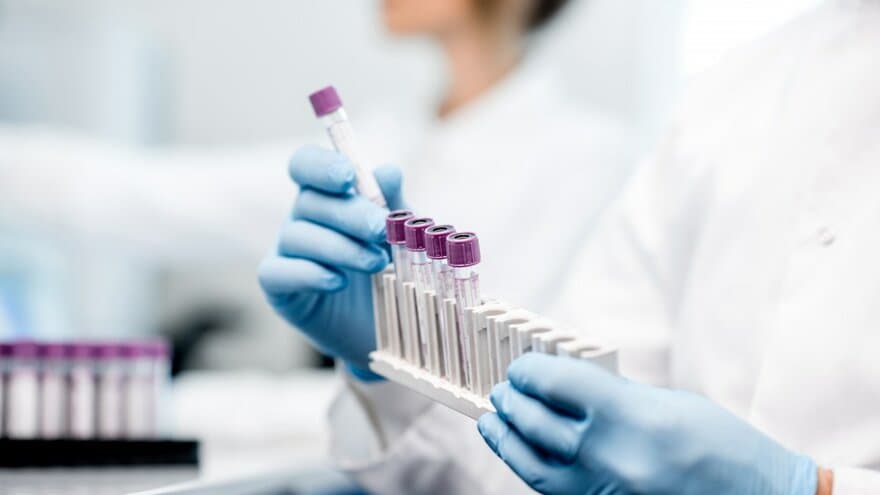About our unit
What do we do?
Every day we are exposed to unwanted substances from various sources through the food we eat. They come, among other things, from environmental toxins that are transported from various pollution sources to soil, sediments and water, and later to foodstuffs, but also from additives directly in the food, or from processing of food that forms such substances through various reactions.
Some foods can also contain natural toxins, for example many species of shellfish which can contain toxins produced by algae. Substances used as veterinary medicines in production animals can also occur as residues in food. Safe and healthy food is a prerequisite for good health, the unwanted substances know no national borders, are not species-specific and they are similar to body-specific substances, such as hormones. Thus, they can enter cells and disrupt fine-tuned processes, and they can damage DNA.
The Toxicology Unit works with chemical and biological analyzes of various matrices to investigate the content and effect of these substances.
Slideshow from the laboratory

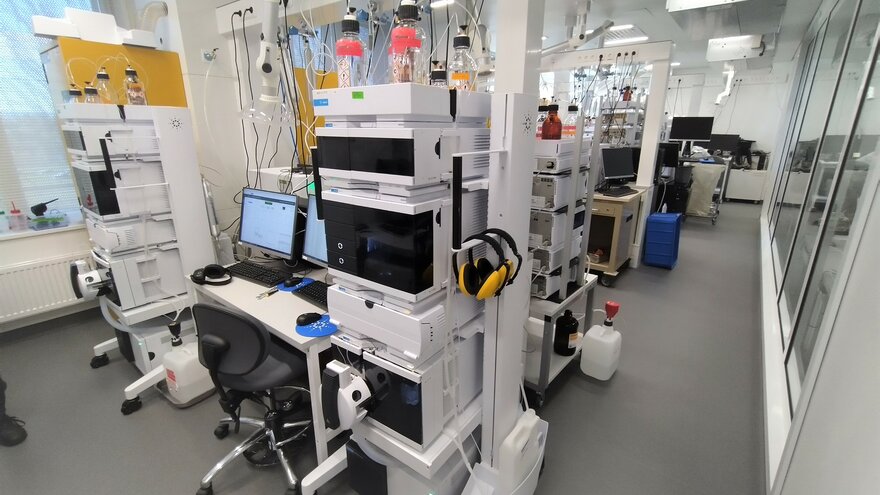
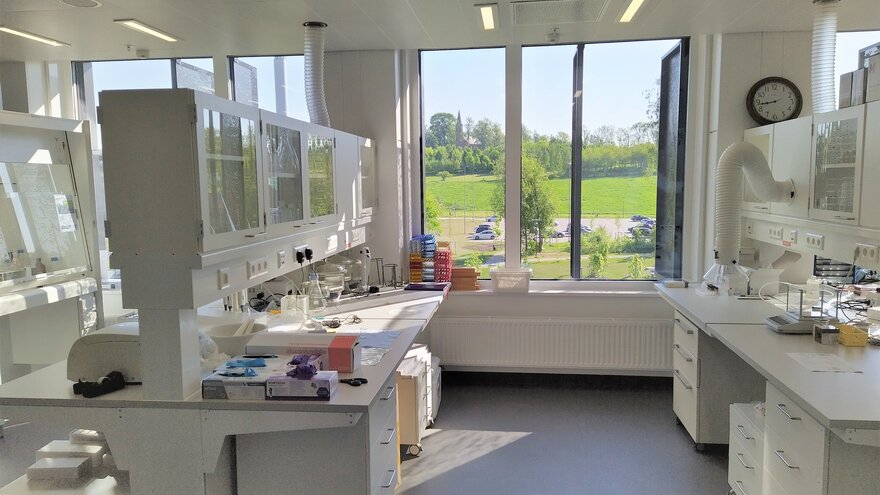
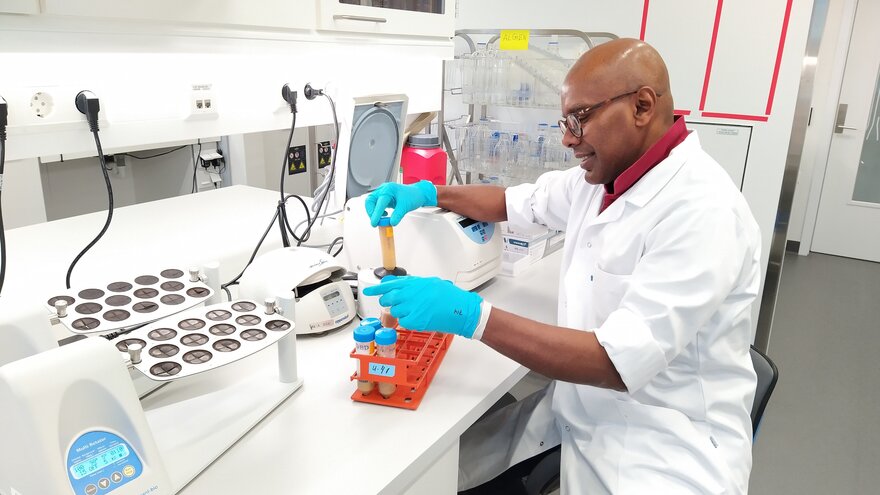
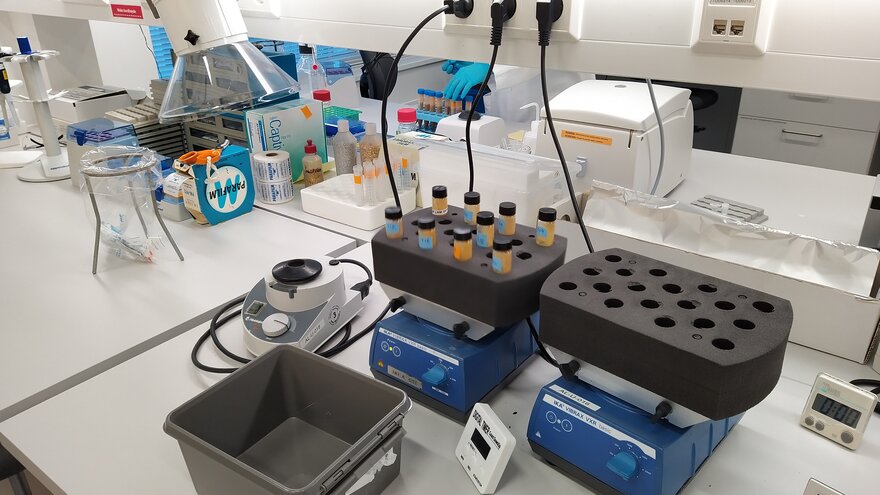

Ecpertise and methods
- In our work we use
- Advanced instrumentation for liquid and gas chromatography with various types of detection, e.g. UV, FLD and mass spectrometry
- PCR- and OMICS-based techniques and microscopy (light and high-throughput fluorescence microscopy) - We have two accredited laboratories with several accredited methods:
- The Algaetoxin laboratory monitors the content of marine algae toxins in shells
- The Environmental Toxicology Lab performs analyzes for various environmental toxins - National reference laboratory for marine algal toxins in shellfish
- We have the expertise to develop new analysis methods
- We research food and cancer; environmental toxins in fish meat (radionuclides, heavy metals, POPs) in the framework of CERAD and other collaborative projects
- The group has more than 30 years' experience with monitoring studies and participation in project- and assignment-related risk assessment work, as well as contributions to the Science Committee for Food and the Environment (VKM) (Jan Ludvig Lyche)
- In our work we use
Teaching
The toxicology Unit is involved in teaching on the veterinary course i VET358 Farmakologi og toksikologi (Pharmachology and toxicology) and VET364 Mattrygghet (Food Safety). The teaching has a One Health perspective with an emphasis on food toxicology, which includes why various chemical substances in food can represent a health risk for the population, how unwanted substances are transferred to food in the production chains, and principles for toxicological risk assessment, risk management and risk communication.
The unit also contributes with guest lectures in laboratory animal studies for both veterinary assistant students and veterinary students, DYR202 and VET 353.
Ongoing research projects
Arctic pollution in a One Health perspective – from complex challenges to sustainable solutions (ArcSolution)
ArcSolution aims to reduce pollution in the Arctic with a 'One Health' approach that includes both environmental and human health.
The research group is involved in two of the project's work packages.
WP5 Solutions: Resilience, adaptation, mitigation. The goal of this part of the project is to establish an analysis method for micro- and nanoplastics (eventually also plastic additives) in water and biota using pyrolysis-GC/GC-TOF.
WP4 Impacts under different scenarios. Analyses of PFAS and other CECs (contaminants of emerging concern) in samples from Arctic areas, including Svalbard.
The project is funded by the EU - Horizon Europe.
Contact: Gabrielle Haddad-Weiser (WP5) og Jan Ludvig Lyche (WP4)
Read more on ArcSolutions web page
MIcrofluidic SenSors for rapId detectiOn of cyaNotoxins (MISSION)
The MISSION project will develop a portable and cost-effective tool for rapid on-site detection of two groups of cyanotoxins, microcystins (MCs) and saxitoxins (STXs). This will improve water quality monitoring and reduce health risks and economic losses caused by cyanobacterial blooms. The project brings together experts from Portugal, Norway, and Italy to develop and validate new sensor technologies that are cost-effective and can be used outside the laboratory by operators without specialized training.
The project is led by the University of Aveiro.
Contact: John A. Aasen Bunæs, project participant.
Read more on the MISSION project page
Processed Food and Colorectal Cancer: Effect of Protein Source, Processing, and Dietary Patterns<br>(CRC-3p)
CRC-3p is designed to track the carcinogenic potential of red meat and plant-based meat alternatives to reveal the significance of protein source and the degree of processing (unprocessed, processed, ultra-processed) on the development of colorectal cancer (CRC). Additionally, CRC-3p aims to shed light on how dietary patterns can influence the carcinogenic potential of various processed foods.
The project is led by Mette Helen Bjørge Müller at VET and includes both internal and external participants.
Contact: Silje Modahl Johanson, participant from the Toxicology Unit
Read more on CRC-3p's project page
Partnership for the Assessment of Risks from Chemicals (PARC)
PARC is an initiative of the European Union (EU), launched in Paris on 11 May 2022 and is a 7 year partnership (until 2029) under Horizon Europe
The overall aim of PARC is to develop next-generation chemical risk assessment to protect human health and the environment. It supports the EU's chemicals strategy for sustainability and the European Green Deal's "Zero pollution" ambition with new data, knowledge, methods and tools, expertise and networks.
It has a total funding volume of €400 million, 50% funded by the European Union and 50% by the Research Council of Norway (RCN), of which NMBU is funded with. NMBU participates in Development of sensitive quantiative NP/MP analytical methods (KBM) and in Novel approach methods (NAMs) for neurotoxicity, neuroendocrine, and reproductive testing (VET). Jan Ludvig Lyche and Selma Hurem participate from VET and collaborate with Roland Kallenborn from KBM.
Contact: Selma Hurem, coordinator from VET
Read more on PARC's project page
Processed food with Norwegian ingredients for the prevention of colon cancer - Nofima (VegMeatCRC)
The project investigates whether Norwegian raw materials and ingredients included in processed meat products (sausages) can contribute to influencing the development of bowel cancer. The project also focuses in particular on whether mixing in vegetables can help reduce the risk of colon cancer. Our unit is a partner in the project and our mouse model for colon cancer is central to the project.
Contact: Silje Modahl Johanson.Sustainable Norwegian sources of dietary fiber and protein for a healthy intestinal flora - Nofima (GutFeedingNow)
We participate in the project where we study the health effects of new plant-based ingredients and products based on Norwegian raw materials, with a focus on protein digestion and effects on intestinal flora and intestinal health.
Kontakt: Silje Modahl Johanson.Pink salomon
Analyses of environmental pollutants (POPs and heavy metals) in pink salmon caught in Finnmark.
Contact: Vidar Berg
Monitoring of environmental toxins in freshwater fish
Since 2014, the Environmental Toxicology Laboratory has carried out analyzes of fish from freshwater on behalf of the Norwegian Environment Agency. We have been involved in three project periods: First 2014-2017, and then 2018-2021. We are now in the third period of analyzes 2022-2026 (collection from and including 2021).
The project manager is Jan Ludvig Lyche. Vidar Berg is responsible for much of the organization of the project, such as:
- Designing an application, and establishing contact with cooperating laboratories.
- The contact with the collection device for capture, reception of material.
- Preparation of collective samples and distribution to all laboratories involved.
- Receipt of results from all laboratories, including subcontractors, reporting to the client, including entering data electronically into the "Water environment" database. It is a database that covers much of the Norwegian Environment Agency's activities.
In addition to being project manager, Jan Ludvig as the first author has had a significant job of preparing an annual report on the findings of the project for the Norwegian Environment Agency (see link below).
Lakes and fish
The Norwegian Environment Agency has projects with mapping of lakes and fish from all over Norway. It is the Norwegian Institute for Natural Research (NINA) that collects fish for MT-lab through the projects Ecosystem monitoring in freshwater and Ecosystem monitoring in large lakes. Each year, fish are collected in 12 lakes (new lakes each year), with occasional assistance from MT-lab to obtain sufficient material. 15 relatively large fish from each water are used, and from these three mixed samples are prepared for chemical analyses. In total, we are approaching 100 lakes with analysis results from these years.
There is water in locations from the lowlands to mountain waters, from small waters to large lakes, water from the north, south east and west, from nutrient-poor and nutrient-rich lakes. Primarily, lakes with little human activity have been chosen, but there are also large lakes near cities and industry, such as Øyeren and Tyrifjorden. A significant amount of data has been collected which will be used for publication. The priority species for analysis is trout. In some lakes, trout are not found in sufficient quantities for sample collection. Then the next species on the list is char, and then perch.
Components
In the three periods, the component selection has varied somewhat, because the Norwegian Environment Agency wants information on a wide range of chemical substances. There is nevertheless a core of classic environmental toxins such as chlorinated substances, for example polychlorinated biphenyls (PCBs) and dioxins (Havforskningsinstituttet). Brominated flame retardants and fluorinated compounds (PFAS) and a wide range of organic compounds are analysed. A selection of metals has also been analysed, and isotope analyzes carried out.
Results are presented in several reports:
- Prioriterte miljøgifter i norsk ferskvannsfisk 2013-2016, 2018 (Priority pollutants in Norwegian freshwater fish 2013-2016) (.pdf)
- Monitoring of environmental contaminants in freshwater ecosystems, 2018 (.pdf)
- EU Water Framework-Directive Priority Contaminants in Norwegian Freshwater Fish, 2019 (.pdf)
- EU Water Framework-Directive Priority Contaminants in Norwegian Freshwater Fish, 2020 (.pdf)
- EU Water Framework-Directive Priority Contaminants in Norwegian Freshwater Fish, 2021
Environmental toxins in the Eurasian eagle-owl and other Norwegian birds of prey. Geographical differences and time trends
In a collaboration between the Environmental Toxicology Laboratory, the Veterinary Institute (VI) and the Norwegian Institute of Natural Research (NINA), a project has been started with the aim of investigating the occurrence and tissue concentrations of organic pollutants and other foreign substances (heavy metals, pharmaceuticals, plastic additives) in the hawkmoth and other raptor species (peregrine falcon ). The Eurasian eagle-owl is listed on the red list from 2015 as a highly threatened species, and thus has a special need for protection. Both the buzzard and other birds of prey are apex predators with a long lifespan and can therefore accumulate high levels of environmental toxins throughout their lifetime.
In addition to measuring the level of foreign substances, a sub-goal will be to look at connections between disease history/autopsy findings and toxic load. Another sub-goal will be to investigate any geographical differences and time trends. We also want to investigate species differences with regard to exposure to toxins.
The sample material, which has been collected over a period of 30 years, comes from wild birds from all over the country and has been examined and stored in the biobanks at VI and NINA. In collaboration with Dr. Oliver Krone at the Leibniz Institute for Zoo and Wildlife Research, Berlin, we also get access to sea eagle samples from Germany. These samples will be used to compare toxic load in Norwegian and German birds of prey.
Many of the organic environmental toxins we know about have been in production since the first half of the 20th century (PCBs and pesticides such as DDT), but due to increasing restrictions, both the production and use of these substances have decreased in recent decades (Breivik et al. , 2002). Newer substances, on the other hand, such as brominated flame retardants and fluorinated compounds, have only recently or not yet come under the same strict regulation, and several studies show increasing concentrations of such compounds in the environment (Gjershaug et al., 2008, Ahrens et al., 2011).
The general concern with all these environmental toxins is that they are persistent (that they break down very slowly), accumulate up the food chain and that they pose a risk of serious harm to people and the natural environment. Many studies have shown that all groups of these environmental toxins can lead to a number of negative effects in animals and humans (Letcher et al., 2010). The results from our analyzes are therefore very important for the administration in the years to come.
References
- Ahrens, L., Herzke, D., Huber, S., Bustnes, J.O., Bangjord, G. and Ebinghaus, R., 2011. Temporal trends and pattern of polyfluoroalkyl compounds in tawny owl (Strix aluco) eggs from Norway, 1986− 2009. Environmental science & technology, 45(19), pp.8090-8097.
- Breivik, K., Sweetman, A., Pacyna, J.M. and Jones, K.C., 2002. Towards a global historical emission inventory for selected PCB congeners—a mass balance approach: 2. Emissions. Science of the Total Environment, 290(1-3), pp.199-224.
- Gjershaug, J.O., Kålås, J.A., Nygård, T., Herzke, D. and Folkestad, A.O., 2008. Monitoring of raptors and their contamination levels in Norway. AMBIO: A Journal of the Human Environment, 37(6), pp.420-424.
Completed projects
- MiCrofluidic sensOrs for rApid detection of marine toxins in SusTainable AquacuLture (COASTAL), 09.11.2021 - 10.04.2024, John A. Aasen Bunæs.
- Collaboration with CERAD Center of Excellence (SFF) at NMBU, 2013-2022, Selma Hurem.
- Roma Health Risk, 2014-2021, 2020-2024, Vidar Berg
Organization of the unit
Unit manager
Environmental Toxicology Lab
The Algaetoxin Lab
The Chemistry Lab
The Food Toxicology Lab
